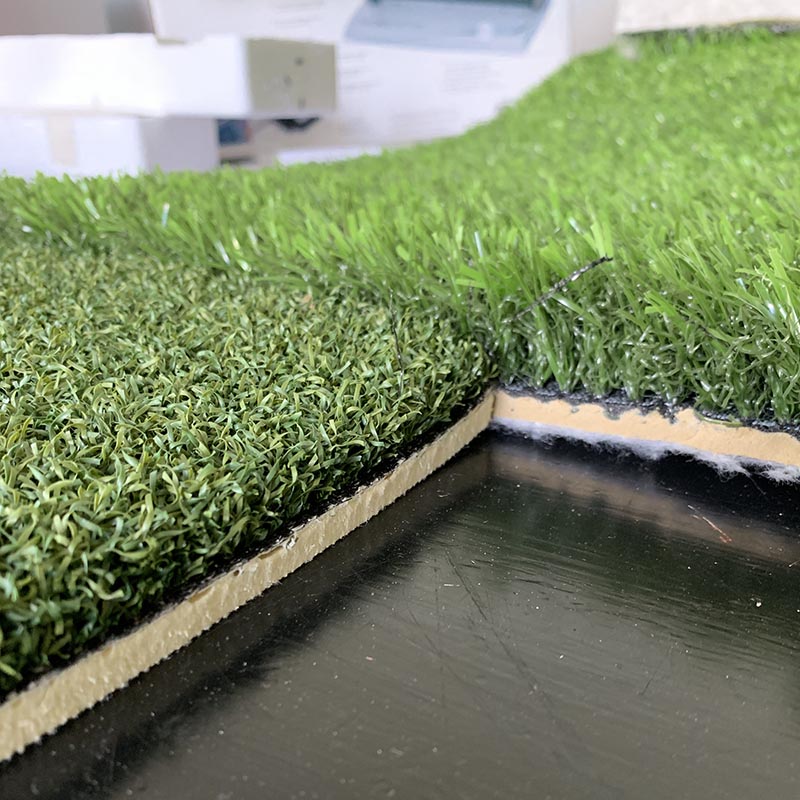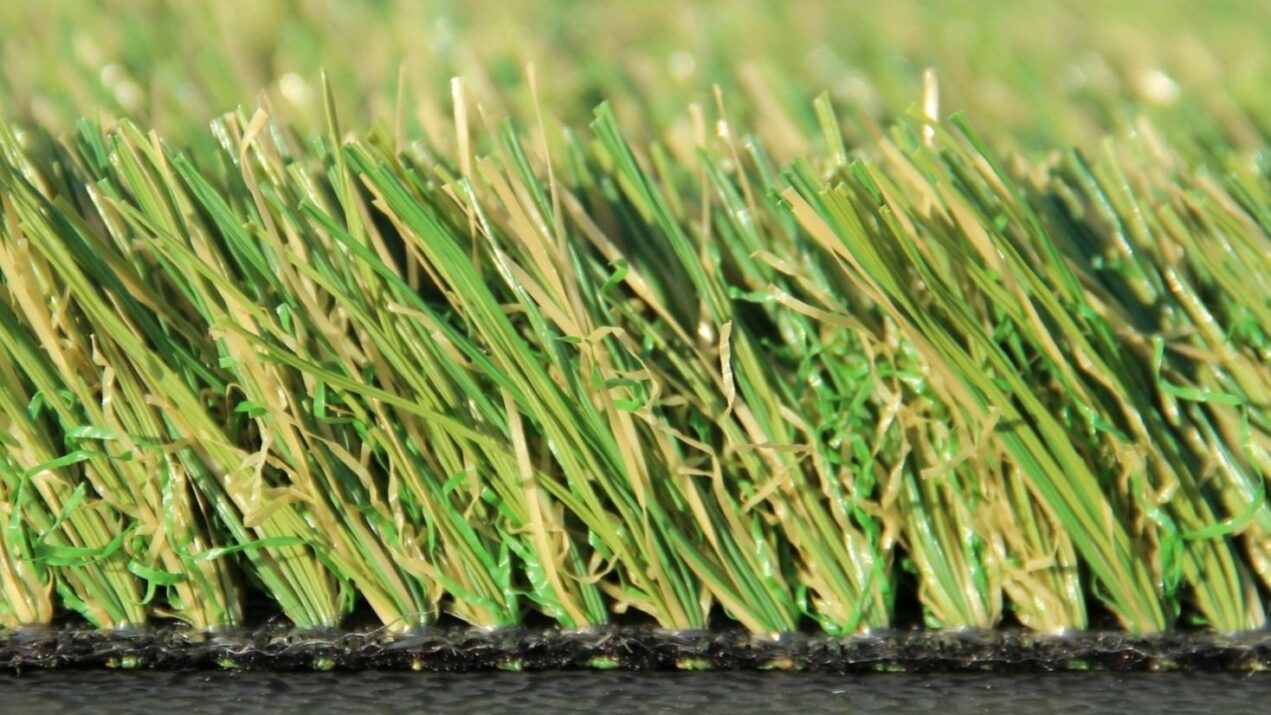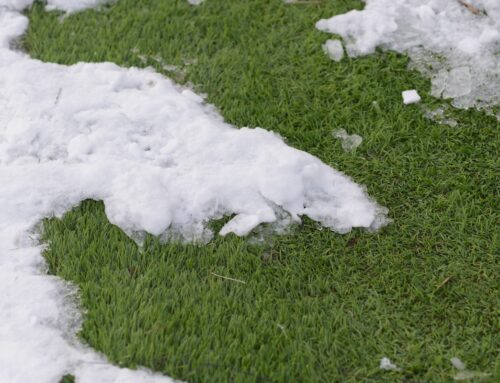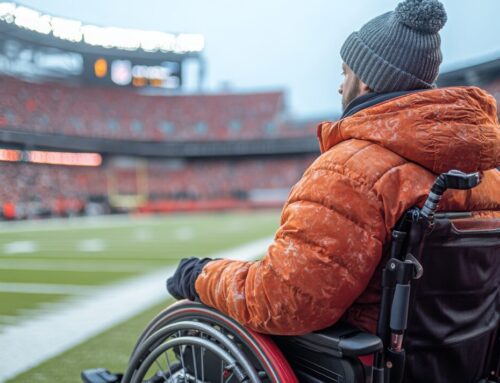Last Updated on January 20, 2025 by ReTurf
When it comes to artificial turf, one of the most talked-about components is the infill—those small granules that sit between the blades of synthetic grass. They might not seem like much, but infill plays a crucial role in how your turf performs and holds up over time. One of the biggest questions people ask is: How deep should the turf infill be? While there’s no one-size-fits-all answer, understanding the factors at play can help you make an informed decision for your specific situation.
Let’s break it down so you can better understand what’s going on beneath your feet.
What Is Turf Infill, and Why Does It Matter?
Turf infill is a layer of material—usually made from sand, rubber, or a combination of the two—that is spread across the surface of artificial grass and worked down into the fibers. Its purpose is to provide support, cushioning, and weight to keep the turf in place. It also helps maintain the appearance of the grass blades by keeping them upright, much like soil does for natural grass.
Without proper infill, artificial turf might not feel or perform the way you expect. The blades can look flat and worn out, and the surface may feel uneven underfoot. Infill also plays a part in managing heat, improving drainage, and even influencing safety in high-use areas like sports fields or playgrounds. Simply put, infill depth isn’t just a technical detail—it has a direct impact on your turf’s overall performance and durability.

The General Rule for Infill Depth
Most artificial turf systems recommend an infill depth between 1/2 inch and 1 1/2 inches, depending on the type of turf and its intended use. This range is flexible for good reason: different applications demand different levels of support and cushioning.
For example:
- Residential lawns: These often require less infill because they’re typically used for light foot traffic and aesthetic purposes. About 1/2 inch to 3/4 inch of infill is usually sufficient.
- Sports fields: With heavier usage and higher performance demands, fields generally need 1 to 1 1/2 inches of infill to handle impacts, provide proper ball roll, and reduce injury risks.
- Playgrounds: Safety is the top priority here, so thicker infill layers (closer to the 1 1/2-inch mark) may be necessary to ensure a soft landing zone.
Factors That Influence Infill Depth
The recommended infill depth isn’t random; it’s based on several factors that affect how the turf performs in real-world conditions. Here’s what to consider:
1. Turf Type
Different artificial grass products are designed with specific infill requirements. For instance, shorter pile height turf—used for putting greens or decorative purposes—may require less infill than longer blades meant for sports fields. Always check the manufacturer’s guidelines to ensure you’re following their recommendations.

2. Material Used
The type of infill material you choose also impacts how much is needed. For example:
- Rubber infill is lightweight and often requires a deeper layer to provide enough cushioning.
- Sand infill is heavier, so you might not need as much depth to achieve the same level of stability.
- Organic infills, such as cork or coconut fibers, may have their own unique depth recommendations based on their density and performance characteristics.
3. Usage Patterns
Think about how the turf will be used. A backyard lawn that’s mostly for looks won’t experience the same wear and tear as a school soccer field. High-traffic areas need deeper infill to maintain resilience and protect the turf from compaction.
4. Climate
Extreme heat or cold can affect how infill materials behave. In hotter climates, for example, rubber infill can become sticky or overly compacted, which may necessitate adjusting the depth to prevent performance issues. In snowy regions, deeper infill layers can help stabilize the turf and prevent frost-related damage.
How to Measure and Maintain Infill Depth
If you’re installing artificial turf yourself or overseeing a professional installation, ensuring the correct infill depth is crucial. Here are some practical tips:
- Start with the Right Amount: Follow the manufacturer’s guidance on how much infill material is required per square foot. Overfilling or underfilling can lead to uneven surfaces and reduced performance.
- Distribute Evenly: Use a spreader to ensure the infill is applied uniformly across the turf. Uneven distribution can create soft spots or areas where the blades don’t stand upright.
- Brush It In: After applying the infill, use a stiff-bristled broom or power brush to work the material into the turf fibers. This ensures proper coverage and prevents the infill from sitting too high or unevenly.
- Check Regularly: Over time, infill can settle or shift, especially in high-use areas. Routine inspections and touch-ups can help maintain the proper depth and keep the turf performing its best.

What Happens If You Get It Wrong?
Incorrect infill depth can cause a range of problems, from minor annoyances to serious safety concerns. If the infill is too shallow, you might notice:
- Blades laying flat or appearing less natural.
- Reduced cushioning, leading to discomfort or even injury.
- Faster wear and tear on the turf, shortening its lifespan.
On the flip side, too much infill can:
- Make the surface feel overly firm or bouncy.
- Create drainage issues if water can’t flow through properly.
- Increase the risk of infill displacement, leading to uneven surfaces.
Why Getting Turf Infill Depth Right Matters
When it comes to artificial turf, infill depth is one of the most crucial elements to get right. It’s not just about appearance; it’s about performance, safety, and longevity. Whether you’re creating a family-friendly backyard, designing a high-traffic sports field, or building a safe playground surface, the right infill depth is the foundation of success.
It’s worth considering how advancements in turf technology have expanded your options for infill materials. From eco-friendly organic options to high-performance engineered solutions, there’s an infill for every scenario. Additionally, keep in mind that a well-maintained turf system isn’t just about the initial installation—ongoing care, such as brushing and periodic adjustments, will ensure you get the most out of your investment.
At ReTURF, we understand how important it is to find the right products for your specific needs. Whether you’re looking for high-quality turf, premium infill materials, or expert advice, we’re here to help. Check out our selection of top-notch solutions and let us assist you in creating a surface that’s built to last. With the right choices and proper care, your turf system can provide years of reliable performance and enjoyment.



